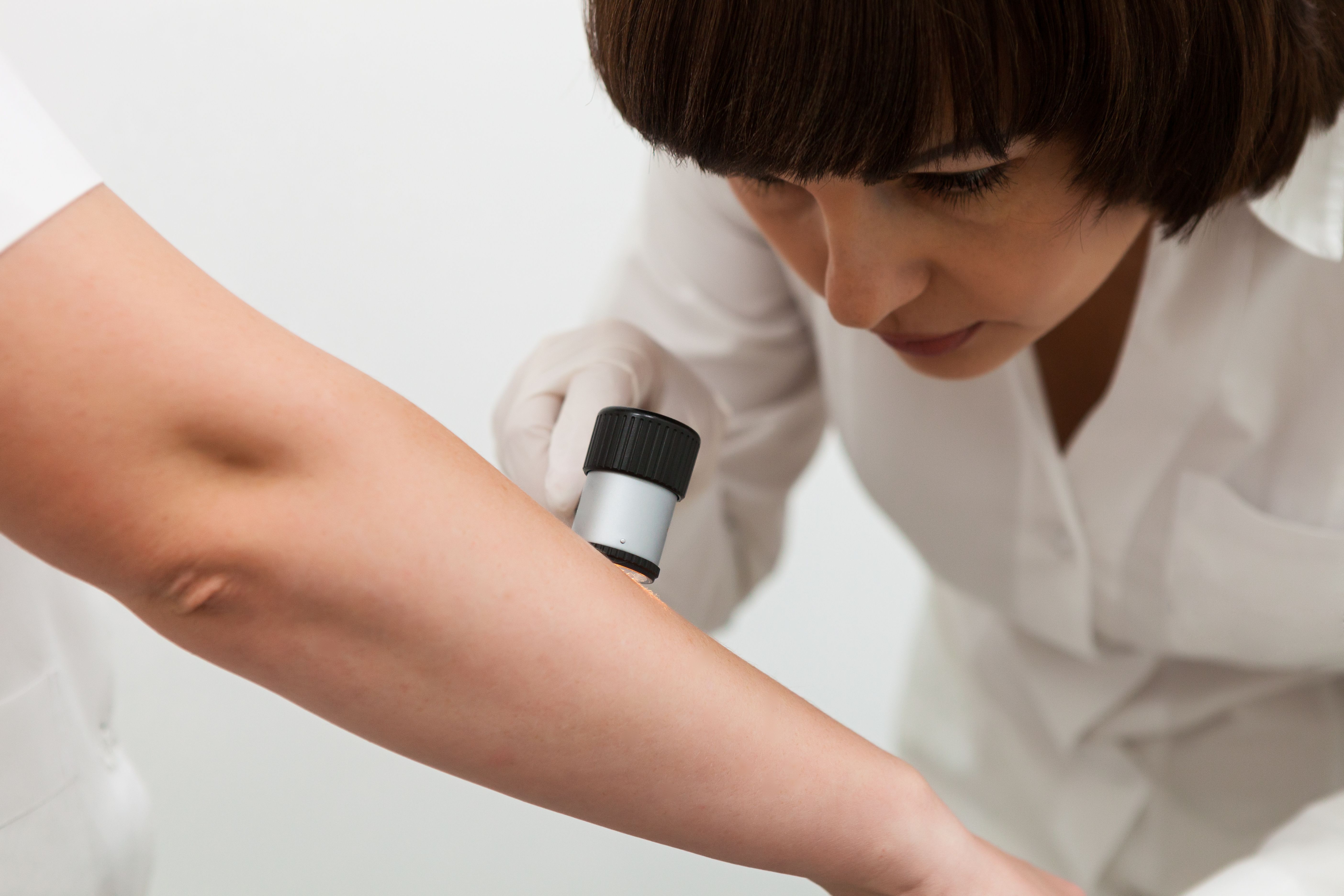- Case-Based Roundtable
- General Dermatology
- Eczema
- Chronic Hand Eczema
- Alopecia
- Aesthetics
- Vitiligo
- COVID-19
- Actinic Keratosis
- Precision Medicine and Biologics
- Rare Disease
- Wound Care
- Rosacea
- Psoriasis
- Psoriatic Arthritis
- Atopic Dermatitis
- Melasma
- NP and PA
- Skin Cancer
- Hidradenitis Suppurativa
- Drug Watch
- Pigmentary Disorders
- Acne
- Pediatric Dermatology
- Practice Management
- Prurigo Nodularis
- Buy-and-Bill
News
Article
Dermoscopy Aids in Diagnosing Psoriasis Vulgaris and Nail Psoriasis
Author(s):
Specific dermoscopic features help determine a diagnosis and the severity of disease.
Researchers conducted a review of literature that used dermoscopy to evaluate and diagnose psoriasis and found the method exhibited good clinical value in assessing psoriasis.1
Psoriasis Vulgaris
In psoriasis vulgaris, dermoscopy highlights the red-dotted vessels that are a common feature of the disease. The pattern has been described as dotted or globular vessels, red dots, or red globules, “with corresponding histopathological features being the apical ends of vertically running dilated vessels that are distributed regularly in the club-shaped dermal papillae.”
nidvoray/AdobeStock

Red-dotted vessels were described as appearing in 96% to 100% of patients with psoriasis vulgaris in several studies. Dotted vessels are not specific manifestations of psoriasis vulgaris and some studies have found the diagnostic specificity to be 74%. They have also been observed in other inflammatory skin diseases, such as erythroplasia and lichen planus. Frequency of dotted vessels in the palmar and plantar regions is the lowest and in the intertriginous areas dotted vessels with regular distribution is more common.
The presence of ring or hairpin-like vessels is significant in diagnosing psoriasis vulgaris as they occurred in 91.9% to 100% of cases of psoriasis vulgaris.
Diagnostic specificity of white scales for psoriasis vulgaris was 83.8% when observed under dermoscopy. White scales were most common on the scalp, palmar, and plantaris areas.
Light red is most commonly the background color for psoriasis, which corresponds with the histopathological features of the thinning of the epidermis above the dermal papilla, dilation of vessels in the dermal papilla and superficial dermis, and perivascular inflammatory cell infiltration. Hemorrhagic dots are dermoscopic manifestations of psoriasis that have been seen in 30% of patients with psoriasis.
Nail Psoriasis
Dermoscopy is also a helpful tool in diagnosing nail psoriasis. Pitting, subungual hyperkeratosis, salmon patch, and splinter hemorrhage have been shown to be more visible using a dermoscope than by clinical evaluation. Dermoscopy aids in identifying the affected area in nail psoriasis. Dermoscopic manifestation can differ between the nail matrix and the nail bed.
The specific dermoscopy patterns of psoriatic nails makes dermoscopy a useful tool in distinguishing between nail psoriasis, onychomycosis, traumatic onycholysis, and allergic contact dermatitis caused by artificial nails. Dermoscopy can also be helpful in determining psoriasis severity in the nail area.
Palmoplantar Psoriasis
In patients with palmoplantar psoriasis, diffuse white scales have been observed as the most common dermoscopic feature. The dotted vessels seen in palmoplantar psoriasis may be distributed in a beaded pattern along the sulci cutis, which aids in making a diagnosis.
The most common vascular morphology of palmoplantar psoriasis and palmoplantar eczema is dotted vessels, but distribution is different between the 2 diseases. Dermoscopy may help identify the regular distribution of vessels seen in psoriasis, aiding in a correct diagnosis.
Treatment Outcome
Several studies have observed a correlation between the treatment outcome of psoriasis and specific dermoscopic features. “The appearance of hemorrhagic dots may predict a favorable response to treatment, even before clinical improvement, thereby reducing the probability of error evaluation of the drug being invalid,” concluded researchers.
Reference
- Wu Y, Sun L. Clinical value of dermoscopy in psoriasis. J Cosmet Dermatol. 2023;00:1-12. doi:10.1111/jocd.15926





